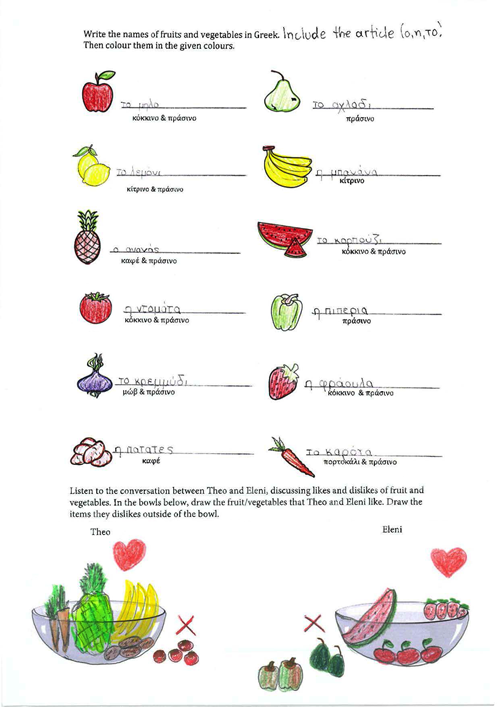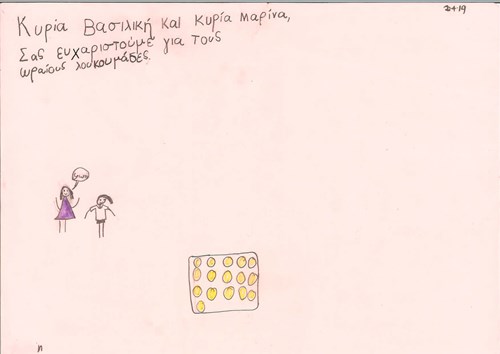Languages: Modern Greek - Satisfactory - Years 3 and 4
Portfolio summary
This portfolio of student work shows that the student can interact with the teacher and peers to share simple information about aspects of their lives, such as school, home and everyday routines (WS1, WS4). The student uses formulaic expressions when participating in classroom routines, collaborative activities and simple transactional exchanges, such as praising and encouraging others, asking for help, seeking clarification, and requesting permission (WS4). The student uses features of Greek pronunciation when asking questions and making statements and exclamations, including use of the accent mark (WS1, WS4). The student locates information from spoken and written texts related to everyday contexts and routines (WS2) and uses simple statements and support materials to present information about themselves, others, home and school (WS1). The student responds to imaginative texts by discussing favourite elements, acting out events and making simple statements about characters (WS1). The student performs and creates short imaginative texts, using formulaic expressions and modelled language (WS1, WS2). The student uses vocabulary related to school, home and everyday routines, and describes people, objects or events using adjectives and adverbs (WS1, WS2, WS4). The student uses appropriate word order, gender, and singular and plural forms in simple spoken and written texts (WS1, WS2, WS4). The student translates and interprets common words and frequently used language (WS1, WS2) relating to familiar environments and creates simple bilingual resources for the classroom. The student identifies ways that their own language and the Greek language reflect ways of behaving as well as words (WS4).
The student writes letters of the Greek alphabet (WS2, WS3, WS4), and identifies sound–letter relationships, letter clusters, vowel–consonant combinations and the most common digraphs (WS1, WS3, WS4). The student identifies the structure and linguistic features of texts used in familiar contexts, such as stories, songs, recipes and conversations (WS1, WS2, WS4). The student gives examples of how language use varies according to the context and purpose of the exchange (WS2, WS4). The student identifies ways that languages change over time, and how languages influence each other, providing examples of words in English that are borrowed from Greek and words in Greek that are borrowed from other languages (WS1). The student compares Greek and English, identifying similarities and differences, particularly in vocabulary, behaviours and expressions related to cultural practices, such as special occasions (WS1, WS4).



